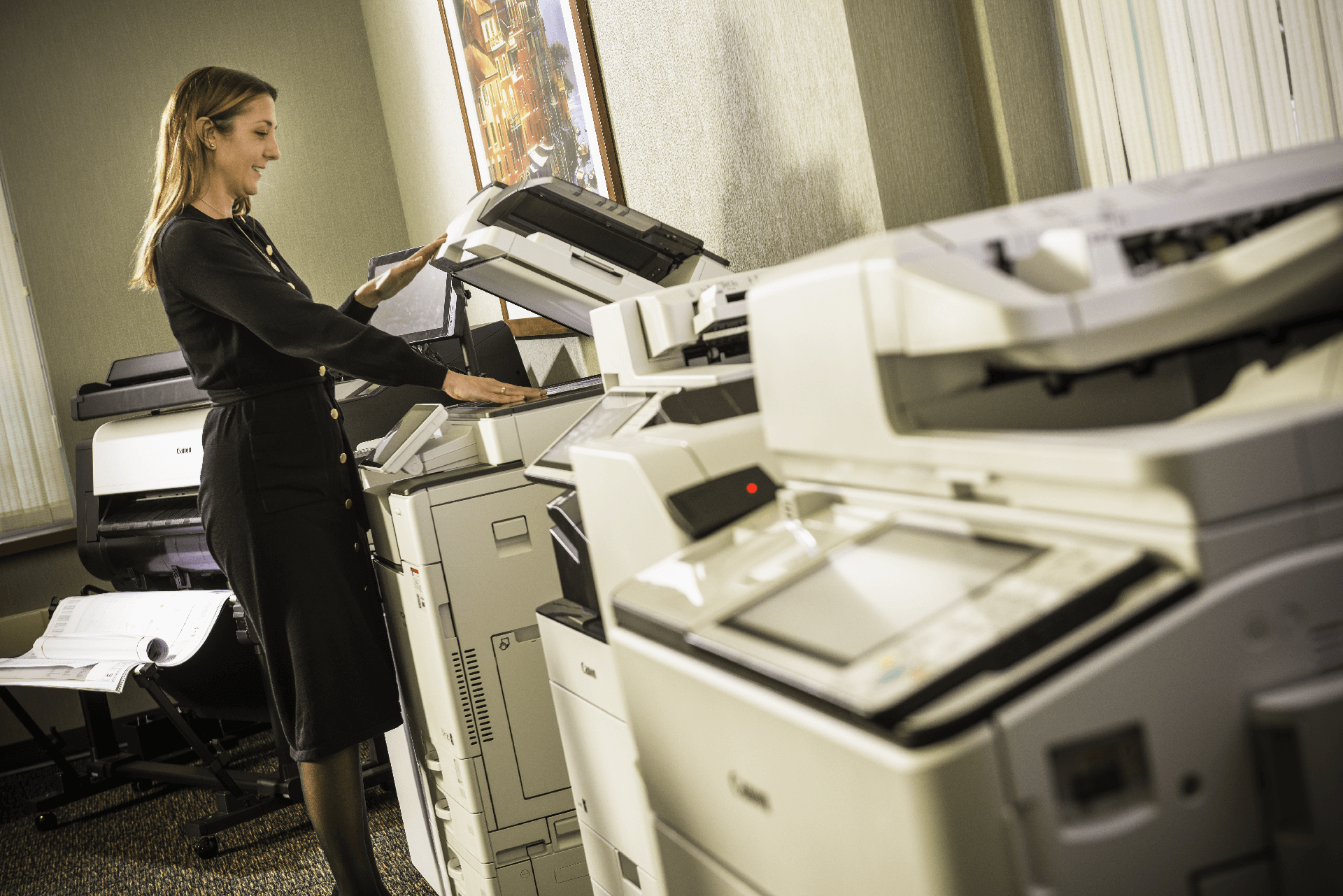It’s getting harder for some businesses to turn a profit, especially when the cost of doing business keeps rising. In addition to rising payrolls, utilities, rent and other expenses, technology budgets keep climbing, too.
When talking about business technology, most envision computers and software. But to remain competitive in today’s business environment requires a well-rounded and holistic approach that includes robust communication tools, video conferencing, AI-enabled devices, advanced print capabilities and more.
With savvy investment and outsourcing, companies can find ways to do more while spending less. If that sounds too good to be true, consider these approaches to your office technology budget strategy.
Be Flexible and Adapt Throughout the Year
Considering how quickly technology is advancing, there’s no longer such a thing as an annual fixed technology budget or plan. While planning is still critical, businesses need to approach annual budget planning with more flexibility. Consider ways to speed up your planning cycle. The more quickly you can analyze and adjust the implementation of your plan, the more you will be able to respond to developments as they happen.
A business can create a high-level target for a business strategy and budget but needs to create a way to measure the success of the plan. Include quarterly or monthly reviews to analyze metrics and leading indicators. If a key performance indicator isn’t meeting a goal, adjust your plan as needed.
Determine Return on Investment (ROI)
Identifying ROI is critical when looking to trim budgets or invest more in a particular technology. It is critical to show the outcome, but also understand the impact of individual line items. Technology line items that don’t drive revenue or have the potential to increase profit margins and productivity should be considered for the chopping block.
To determine ROI, you must consider the immediate and long-term benefits of a technology solution. Given economic uncertainties, remember to consider the following:
- What needs will a given technology investment fill?
- What is your organization trying to accomplish?
- How will the new technology help you accomplish your business objectives?
- Can you quantify the impact of new technologies in terms of ROI?
To understand ROI requires a deep dive into analytics. Doing so with accuracy is difficult for companies that don’t have a robust tracking system that analyzes data from disparate systems and business units. If that sounds like you, explore technology solutions that will help you tear down departmental silos. Doing so will help you gain a clearer picture of where dollars are spent, which investments deliver the greatest ROI and which may need to be trimmed.
Get Quotes for Managed Technology Providers
Many small and mid-sized businesses (SMBs) require similar technology stacks as major enterprises but on a smaller scale. Yet most SMBs lack the resources to hire an internal information technology (IT) team to determine their needs and manage it all.
Most SMBs don’t have a chief information officer (CIO), meaning they often rely on one or two individuals on their staff who were hired for other positions to oversee their technology on the side. Often, items only get attention when something doesn’t work as it should. Such situations inevitably lead to lost productivity and slow adoption of critical technologies. Not keeping up with rapidly evolving technologies can leave a company at a major disadvantage and widen the gap between them and their competitors.
This scenario is one reason SMBs look to managed technology providers so they can focus on the business at hand. Often, there are two areas of focus for managed services:
- Managed IT (computers, servers, hardware and software, etc.)
- Managed Office Technologies (printers, scanners, communication systems, smart whiteboards and displays, etc.)
There are a lot of companies that rely on Managed IT providers to help them determine budgets for their computer systems, cloud integration and cybersecurity needs. Trying to buy, manage, maintain and upgrade your company’s networking equipment and infrastructure on your own is an expensive endeavor. Managed IT and cloud services can eliminate much of that overhead, so take advantage of free assessments and get a quote from a Managed IT provider.
While a reliable computer system is critical, some fail to plan for other equally important technologies that can help improve productivity and their bottom line. Managed Print Services (MPS) is one example that can save companies anywhere from 30–50% on printing costs. Managed Print Services is an easy way to have predictable monthly billing and reduce costs in your print infrastructure. They’ll also help you track toner, reduce waste and enhance your print security, bringing additional time and cost savings.
RELATED: 5 Most Frequently Asked Questions About Managed Print
A Managed Services provider can also equip you with interactive display boards that allow you to collaborate and deliver presentations, from the office to the classroom, and beyond. They integrate with numerous apps and software, and easily switch from presentation mode to video conference mode, or deliver both functions at once.
And what about your phone, video conferencing, chat, screen sharing and file management? Deploying Unified Communications as a Service (UCaaS) — a cloud-based communications technology — can help your organization meet the growing demands of connecting with onsite and remote employees, customers and prospects.
So, when planning your budget, look beyond traditional technologies and be sure to include printers, video conferencing, UCaaS and others that can sometimes be overlooked. A Managed Services provider like Gordon Flesch Company can provide a complimentary assessment and make recommendations to help you determine a budget and then tweak it as necessary to fit within your means. Since there’s no cost and no risk, it makes sense to glean their insights.
Equip Your Team for Success
It may be counterintuitive to consider new technologies when faced with budget constraints, but it’s important to invest in tools that can help you achieve your growth goals and equip your employees to do their best work. Just as important is staying in step with or, better yet, ahead of your competition.
A “set it and forget it” annual plan will not succeed in the face of rapid change. Looking at your technology as an investment rather than an expense can help position you for future success. Not sure where to start? Consider optimizing your print environment and expand from there. Taking an iterative approach can make it more manageable.
Be sure to check out our Managed Print FAQ infographic below for more insights. Better yet, cut to the chase and talk to the business process and technology experts at the Gordon Flesch Company today to request a free, no-obligation assessment.










